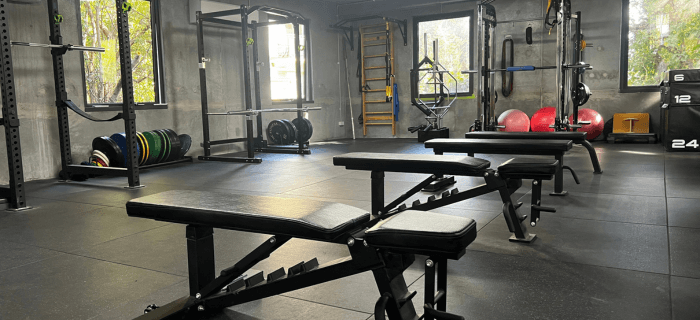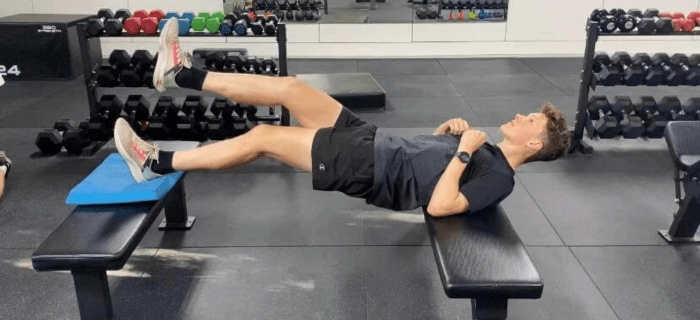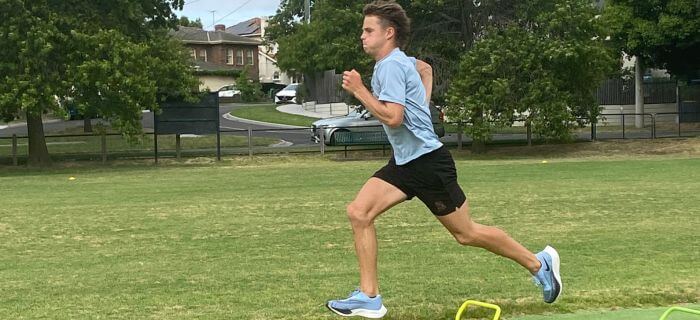CRICKET STRENGTH AND CONDITIONING COACHES
Strength & Conditioning programs for Cricketers
Your Cricket Strength and Conditioning Coach
Our strength training philosophy is to build a strong foundation to be injury free and ready to play, train and compete. We focus on mobility, stability, agility, balance and coordination alongside improving strength, speed and power.
Our Coaches Have Worked With
Expert Strength and Conditioning Tailored to Cricket
At Run Ready we provide strength and conditioning training for cricketers at various levels. Cricket is largely an individual sport, so working on the individual can wield wonderful results for the team, not to mention personal success. Our Strength & Conditioning programs are tailored tot he individual. Some of the attributes we can increase with a strength and conditioning program are as follows:
- Acceleration
- Speed
- Injury Prevention
- Power
- Strength
- Fitness
- Balance


Strength and Conditioning for Cricket
Strength and Conditioning For Cricket
The game of cricket is quite diverse in it’s skillsets, physical requirements and techniques, making any program aiming at increasing desired physical attributes complex and best designed by a professional.
Strength and Conditioning For Cricket
Strength and Conditioning for Batsmen
A batsmens training requirements differ from bowlers, as it is probably pretty obvious. A batsman’s repertoire includes mobility, strength, and aerobic fitness. You should also think about how your batsmanship is impacted by your gear, such as your pads or the bat you use. As a result, you should devote time in your gym training regimen to each of these.
The muscles in your back, shoulders, and biceps are used to bat. As you swing the bat, you’re also using your core muscles to assist turn your body. As a result, you should concentrate your strength training on compound motions like hammer curls, bicep curls, overhead presses and military presses. Core exercises such as planking and situps or crunches are useful to hit the core, core training is essential for a batsmen and often overlooked.
Strength and Conditioning for a Bowler
Bowlers have a completely different set of physical attributes needed to dominate their position. Fast bowlers have the highest load on them when compared to spin and slow bowlers, fast bowlers had 35% less recovery time between high-intensity efforts compared with slow (spin) bowlers, batsmen, and the wicketkeeper, so aerobic training does play a role, and leans toward fast bowlers, this should be an element of a fast bowlers s and c program. Recent studies have shown that fast bowlers spend 69 percent of their time walking, 16 percent jogging, 9 percent running or striding, and 7 percent sprinting during one-day international matches.
Bowling is a full body movement and technique can strain different parts of the body. Due to the repetitive activity, bowlers usually discover that their bowling arm has better strength and muscular tone. Because the abdominals, obliques, and back muscles are largely employed to twist the body when the bowler runs and releases the ball, they benefit from a strengthening program as well.
For bowlers, rotator cuff strengthening, rotator strength, and explosive movement are all recommended. Exercises such as dumbbell fly’s, cable rotations, cable fly’s, internal and external fly’s and shoulder presses are recommended, for the core medicine ball slams help.
S & C for Batsmen
Sharp stopping and starting and explosive sprints are common to someone in the field as a cricketer,or a tennis player, as well as plenty of throwing the ball, sometimes long distances. As a result, concentrating on lower body strength for speed and agility, as well as chest and shoulder workouts for throwing the ball, may help your on-pitch performance. Using box jumps and frog squats are great exercises for fielders.
Strength in Cricket
Our Strength And Conditioning Philosophy
Our strength training philosophy is to build a strong foundation to be injury free and ready to play, train and compete. We focus on mobility, stability, agility, balance and coordination alongside improving strength, speed and power.
Our cricket strength program focuses on building a strong and robust body with age appropriate exercise prescription. Balance, coordination and sound landing competencies are key focuses of this program. We aim to educate our clients on the importance of run assessments, regular and consistent strength training, and what a good strength training session looks like. We have the expertise to prescribe for the individual and their goals and needs.
Train With a Qualified Strength and Conditioning Trainer
Qualifications
All staff have been qualified through ASCA (Australian Strength & Conditioning Association)

Benefits of Strength and Conditioning in Cricket
Disease Prevention
The physical talents required to thrive at sports are referred to as sports performance. Speed, agility, flexibility, explosiveness, and stamina are all important. All of these areas might be improved with specialised training.
Enhanced Performance
Sports performance refers to the physical abilities necessary to excel at sports. All of these things matter: speed, agility, flexibility, explosiveness, and stamina. With targeted training, all of these areas may be improved.
Increased Athleticism, Strength and Endurance
Our S and C programs increase coordination, agility, athleticism, power, explosiveness, strength and endurance.
Reduces The Risk Of Injury
Sometimes it’s the muscle you neglected that can cost you with injury. A good strength and conditioning program with strengthen your whole body at a rate your body can handle, this helps in injury prevention.
Exercise Physiology
Exercise physiologists evaluate, plan, and implement exercise programmes for chronic diseases and injuries such as cardiovascular disease, diabetes, osteoporosis, depression, cancer, and arthritis, as well as assisting in the restoration of full physical function, health, and wellness.
The study of the body’s reactions to physical exertion is known as exercise physiology. Changes in metabolism and physiology in various parts of the body, such as the heart, lungs, and muscles, as well as structural changes in cells, are all part of these responses.
Exercise Science
Sports science may be traced all the way back to ancient Greece. Galen, a well-known ancient Greek physician, wrote 87 books about how to enhance one’s health (diet), cardiovascular fitness, and physical strength. The application of scientific knowledge to sports activities is known as sport science. In preparation for events and competitions, sport science attempts to help athletes enhance their performance and endurance while lowering the chance of injury.
It’s used to help athletes, the elderly, and everyone in between determine their strengths and weaknesses so that a training programme may be personalised to them.
Sports scientists keep athletes up to date on the newest training regimens, testing, and preparation. Sports science is at the centre of our strength and conditioning programs for all sports, not just cricket.
Specific Cricket Strength Programs
What does it mean to be a Strength and Conditioning Coach? A Strength and Conditioning (S&C) Coach organises, administers, and evaluates athletes’ physical and physiological preparation for particular sports performance goals.
In a gym context, personal trainers deal with individuals one-on-one, whereas strength and conditioning professionals work with athletes. Both are necessary to have extensive understanding of exercise teaching, programme creation, anatomy, and nutrition, and both have the capacity to make a positive difference in people’s lives.
“A personal trainer is a fitness expert who prescribes and instructs exercise….” A strength and conditioning coach is a fitness and physical performance expert who employs exercise prescription to help athletes enhance their performance.
Isometric training is great for rehab strength training. This form of workout is excellent for rehabilitation and can aid in the development of strength in a weak region. Isometric training sessions should consist of up to 8 repetitions, each lasting at least six seconds.
In every team situation, strength is the foundation of everything. Muscles, ligaments, and bones become more damage resistant as a result. An improvement in your capacity to create force, allowing you to run faster and hit, bowl, or toss a cricket ball more effectively.
Because all cricket players do a lot of running, cricket training should incorporate a lot of work on the hamstring, quadriceps, and calf muscles. The upper limb structures, including as the shoulders and chest muscles, play an important part in batting. There is a difference in requirements for different roles such as batsmen and bowlers.
Warm-ups such as jumping jacks, squats, lunges, and arm and leg swings are excellent ways to get your heart pounding. Jump jacks, run in place, and lunge back and forth from your seat to the wall are all good exercises. Swing your arms to warm up before trying it with a bowling ball in a game.
All of the major muscular groups are involved in bowling, including the lower back, quadriceps, hamstrings, gluteus (buttocks), deltoid, and rotator cuff complex. The muscles of the upper extremities that control grip and finger strength are of special importance (biceps, forearm, wrist, fingers and thumb)

